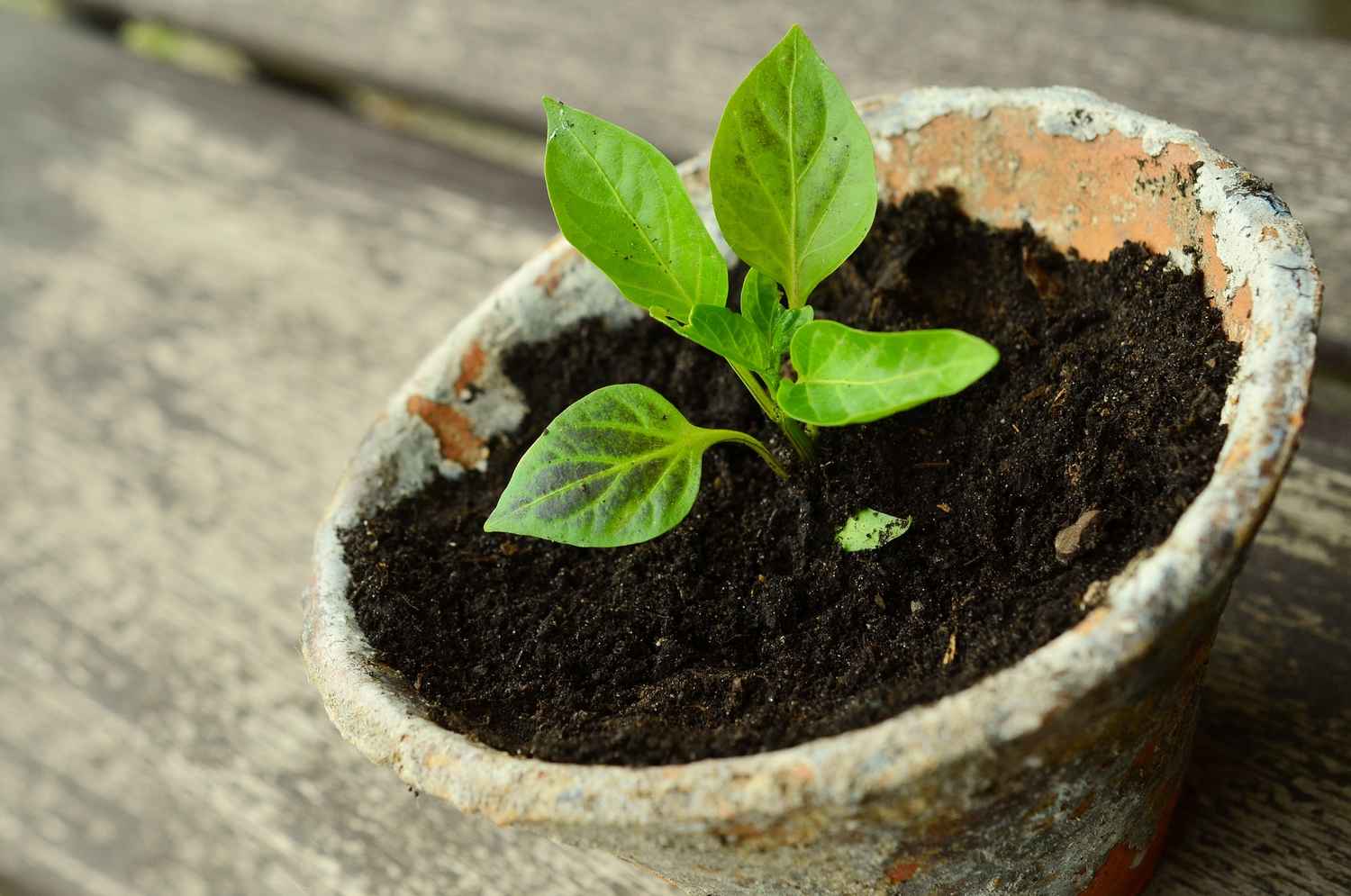
Turf, sand, perlite, vermiculite, clay balls, pumice
For what purpose?
Contents
Some materials are often used in gardening to improve drainage, lighten a substrate, acidify, or retain water. These materials can be either mineral or organic in origin. They include perlite, vermiculite, turf, river sand, gravel, clay balls, and pumice.
The properties of these different elements remain somewhat mysterious to many gardeners, so let’s clarify which material to choose based on the desired effect!
Perlite
Perlite is made from a volcanic rock based on silica. It comes in different grain sizes depending on the intended use. It is a natural material currently available in abundance, but be aware that it is a non-renewable resource with a significant ecological footprint. Therefore, it should be used sparingly.
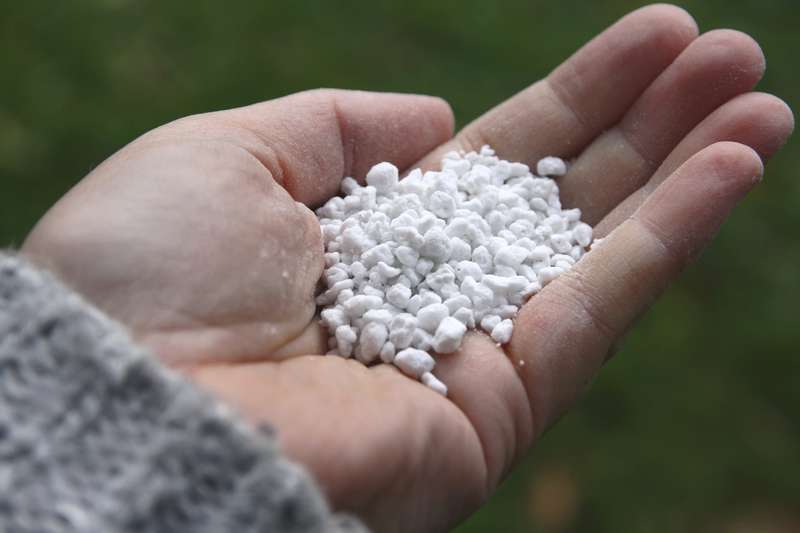
Perlite
Qualities of Perlite:
- Perlite is the perfect material for improving drainage, and it also has insulating properties.
- It is ideal for lightening substrates for cuttings and sowing (it allows for excellent stratification).
- It is very useful in hydroponic cultivation.
Its drawbacks:
- It is not easy to find commercially.
- Perlite is a very light material that can blow away with the wind.
- It remains an inert growing medium.
- It proves to be brittle and disintegrates over time. As a result, it turns into a white powder and eventually leads to a compaction phenomenon. Additionally, it releases an irritating dust for the eyes and breathing.
Discover perlite in video:
Vermiculite
Vermiculite is a natural mineral that lightens substrates. It is rarely used pure, except occasionally for certain sowings and cuttings. Like perlite, vermiculite is a non-renewable resource that should be used judiciously.
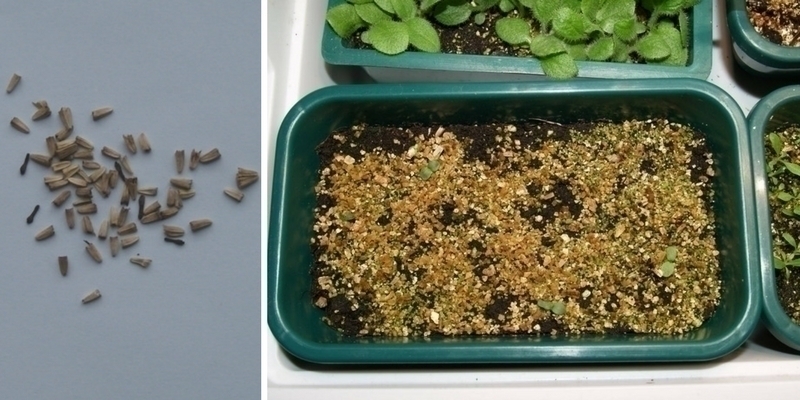 Seed tray covered with vermiculite[/caption>
Seed tray covered with vermiculite[/caption>
The qualities of vermiculite:
- During sowing, a thin layer of vermiculite on the surface helps to maintain homogeneous moisture and facilitates germination.
- It lightens substrates and thus improves aeration, which consequently enhances root development.
- Vermiculite is also inert and rot-proof.
Its drawbacks:
- Over time, a phenomenon of compaction is observed, making the substrate suffocating.
- Vermiculite should not be placed on the surface for certain seeds that require light to germinate.
Turf
Turf is an organic material resulting from the accumulation of organic matter, primarily plant-based, decomposed in an asphyxiating, water-saturated medium. This decomposition occurs over thousands of years. On a human scale, it is therefore a non-renewable resource. Continuous degradation due to human activities and the intensive exploitation of turf moors causes serious damage to this ecosystem rich in biodiversity.
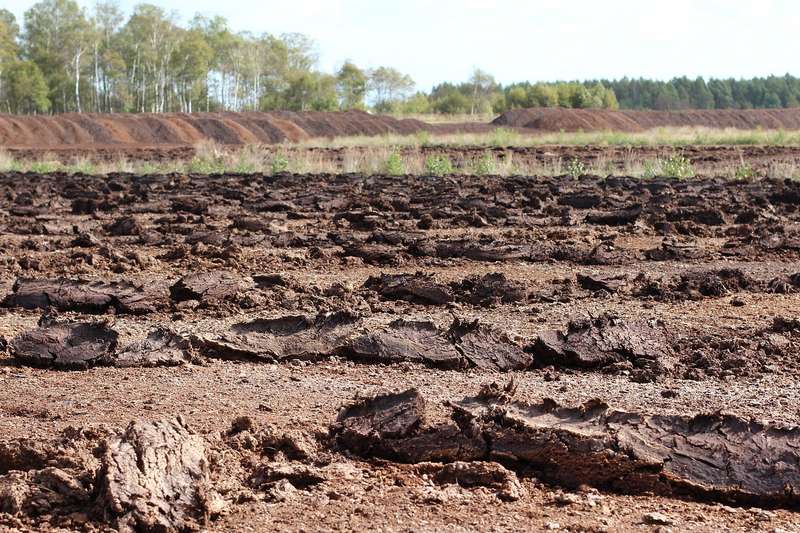
Exploitation of a turf moor
There are three types of turf: blonde, brown, and black. It is the blonde turf that is easily found in garden centres and it is the one we are interested in here. It is the youngest. Little decomposed, it is still fibrous and well-aerated. Acidic and poor, it has a very high water retention capacity.
The qualities of turf:
- It retains a lot of water.
- It allows for acidifying the substrate.
- Blonde turf is perfect for lightening soil or a substrate.
Its drawbacks:
- Turf is a very poor material.
- It is very difficult to rehydrate once dry.
River sand, fine gravel
Sand is found under several names: river sand, sand from the Rhine, the Loire, or the Seine. The sand must have a significant grain size, at least 0.4 mm or slightly more.
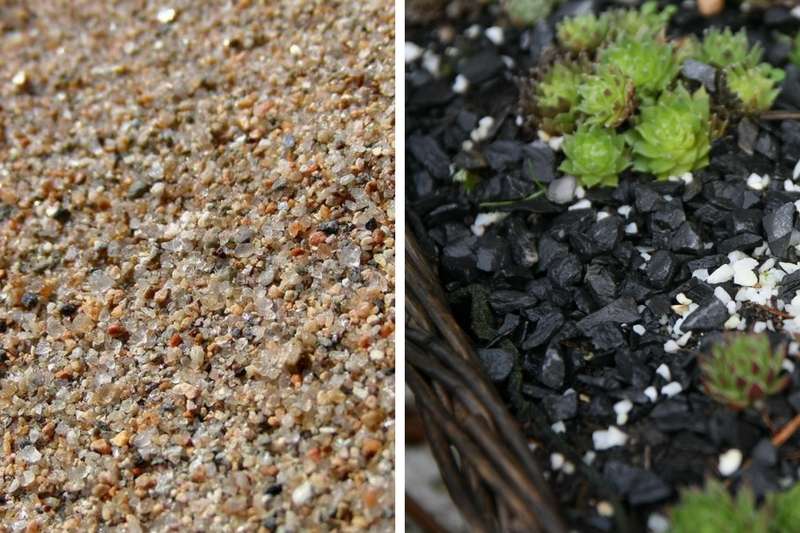 From left to right: river sand – fine gravel
From left to right: river sand – fine gravel
The qualities of river sand:
- River sand helps to add body to soil and/or to weigh it down.
- Coarse sand and fine gravel improve drainage.
- A mixture of river sand in equal parts with potting soil is ideal for taking cuttings.
- River sand, mixed in large proportions with clay soil, will allow roots to penetrate better.
- Both are inert materials that do not alter the chemical composition of the soil.
Its drawbacks:
- If the sand is too fine, it will form concrete with clay soil.
- Sand has no fertilising power.
Clay balls
As the name suggests, these small balls are made from clay and have undergone firing at very high temperatures.
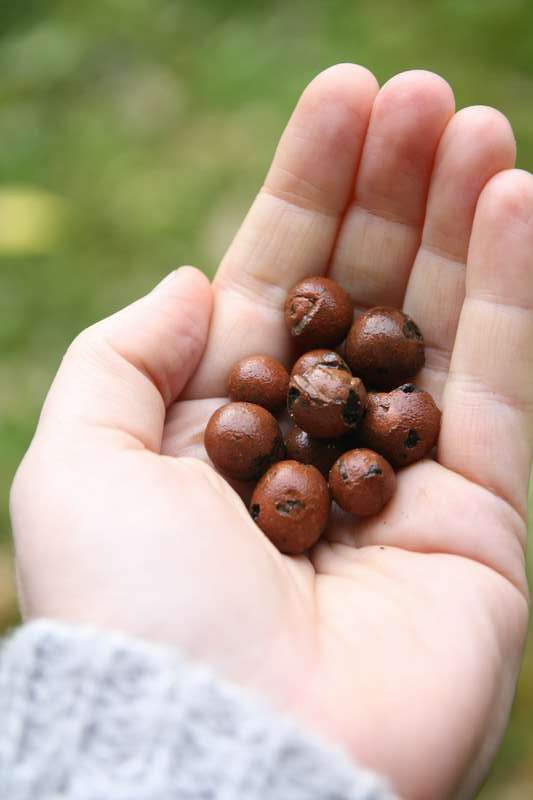
Clay balls
The qualities of clay balls:
- Clay balls help to optimise drainage.
- They have a long lifespan, allowing for recycling.
- As mulch, they help to reduce evaporation.
- They lighten and aerate the substrate.
- Inert and natural, they do not alter the composition of the substrate.
- They have the ability to absorb water and release it gradually.
Their drawback:
- Clay balls have no fertilising power.
Pumice
Red pumice is a natural rock found in volcanic areas, particularly in Auvergne. It is available in various grain sizes. It can be used in the same way as clay balls. It is often recommended for filling lagoon areas.
Qualities of pumice:
- Pumice has a good water retention capacity.
- It is lightweight, yet dense enough not to be blown away by the wind or float in water.
- When used as mulch, its porosity allows for good soil aeration.
- It is durable and rot-proof, making it recyclable.
- It has refractory properties, meaning it stores heat to release it later.
- It lightens clay soils.
- It is decorative and provides a more natural appearance than clay balls.
Its drawbacks:
- Bags are heavy to transport.
- It does not fertilise.
For what purpose?
1) In beds
Turf is useful for lightening and acidifying the soil in preparation for planting a plant that requires these conditions.
River sand, gravel, and pumice are valued for their ability to improve drainage in clay soil. The amount to add depends on the clay content and the desired effect. However, do not underestimate the importance of regular additions of humus (manure, mulches…) which significantly improve clay soil. Thus, it becomes much easier to work with.
Pumice can also serve as a mineral ground cover to limit weeding; a thick layer of 5 to 10 cm is necessary, and it is advisable to wait until spring, when the soil has warmed up, to install it. You can also cover the soil with gravel, but in a thinner layer, around 3 or 4 cm, which requires the installation of a geotextile underneath. However, be aware that adventive plants will always find a way through.
2) In pots
Perlite, vermiculite, sand, and gravel can be mixed into the substrate to optimise drainage. This is very useful when one tends to overwater. Perlite should not exceed a proportion of 30% in the substrate, while up to 50% of vermiculite can be used.
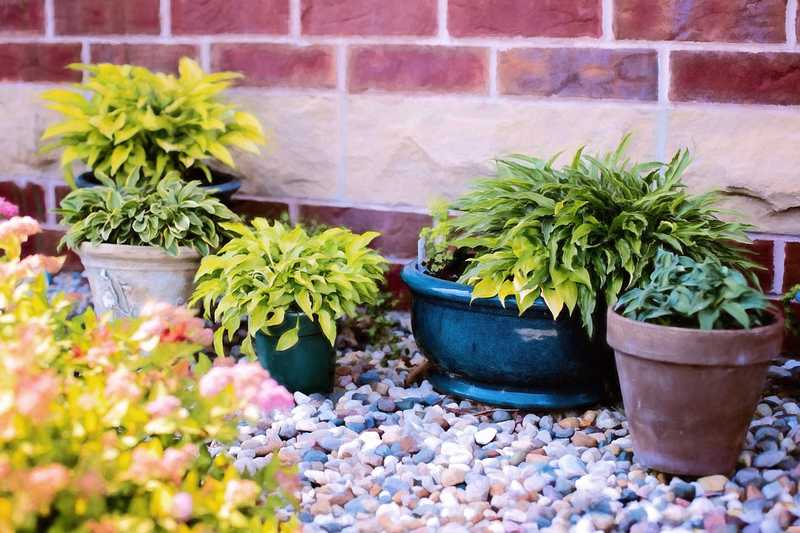
Clay balls and pumice can be used either at the bottom of a pot (2 to 5 cm at most), mixed with potting soil (maximum 10% of the substrate), or on the surface (2 or 3 cm maximum).
3) For sowing/propagation by cuttings
As with pots, you can make mixtures of potting soil and perlite or vermiculite with the same percentages. Sand and fine-grained pumice are also often used.
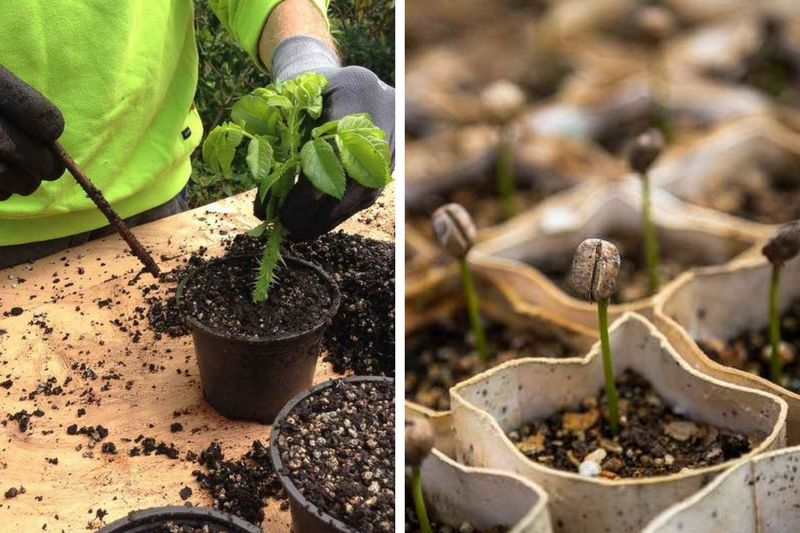
For sowing and cuttings, make a mixture of half light potting soil and vermiculite or river sand. Similarly, a mixture of 50% potting soil, 25% sand, and 25% pumice has been tested and approved.
For cuttings under glass, favour a very draining substrate that you will water frequently, composed of 80% perlite and 20% blonde turf.
Everyone can create their preferred formula. In any case, lightening the potting soil avoids the risks of sudden rot of the seedlings, known as damping off. You can also simply cover your seeds with vermiculite or a bit of sand on the surface of your sowing trays.
For what desired effect?
If you are still unsure between several materials, the following table will guide you in your choice:
| Materials | For draining | For acidifying | For retaining water |
|---|---|---|---|
| Perlite | +++ | – | – |
| Vermiculite | ++ | – | ++ |
| Turf | – | +++ | +++ |
| Sand/gravel | ++ | – | + |
| Clay balls | +++ | – | ++ |
| Pumice | ++ | – | + |
- Subscribe!
- Contents































Comments